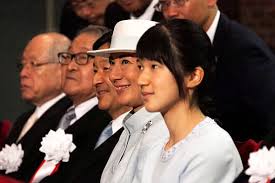Loading
Search
▼ The World's Oldest Dynasty Seeks Successors
- Category:Event
May 1 marks five years since Emperor Naruhito's enthronement. With few male heirs, Japan's dynasty faces succession issues, as conservatives block women from the throne despite broad public support.
Five years after Emperor Naruhito's coronation on May 1, 2019, Japan continues to struggle with securing a lasting succession to the Chrysanthemum Throne.
The dynasty, which has ruled the country for two millennia, now has only 17 members, including three men eligible to succeed the 64-year-old emperor.
The current emperor has only one daughter: 22-year-old Princess Aiko. Therefore, unless the rules of succession are changed, Prince Hisahito, aged 17 and nephew of the current emperor, is likely to become the last male heir to the throne, tasked with the responsibility of having at least one son. Without this, the world's oldest dynasty will cease to exist.
While 90% of Japanese favor the idea of a woman ascending the throne (according to a poll published earlier this month), the conservative ruling party opposes it. They instead support the idea of reinstating male descendants from branches of the imperial family that were stripped of nobility 77 years ago.
Women Barred From The Throne
Japan's throne succession order stipulates that only "legitimate male descendants of the male line" can ascend to the throne. This rule was explicitly defined for the first time in 1889 and further reinforced in 1947 by abolishing the concubine system.The law excludes the emperor's female descendants and their children from succession. In other words, the son of an emperor's daughter cannot claim the throne.
Although eight women have been empresses in the past (the last in 1771), all 126 Japanese monarchs, male and female, were descendants of the paternal line. This is an argument used by conservatives who believe that granting women the same rights of succession as men could lead to another dynasty ascending the throne.
This succession crisis dates back to the early 2000s, as no boy had been born in the imperial family since 1965. Princess Masako, now Empress, "failed" to produce a male heir to the throne with her husband, Naruhito.
Attempts At Reform
In 2005, the Japanese government convened a panel of experts to explore options for ensuring a stable succession to the imperial family. The panel recommended granting succession rights to women and their descendants, allowing equal primogeniture between daughters and sons, and allowing female members who marry commoners to retain their imperial status.
In 2006, the government announced it was preparing a bill to allow women access to the throne. However, the birth of the emperor's nephew, Prince Hisahito, in September 2006 abruptly halted the planned reform. The bill was then abandoned in 2007 by then-Prime Minister Shinzo Abe.
The debate resurfaced in 2016, when Emperor Akihito publicly expressed his desire to abdicate in favor of his eldest son, Naruhito. Following Naruhito's ascension on May 1, 2019, the government once again tasked a panel of experts with finding solutions to the succession crisis and preventing the dynasty's extinction.
In 2021, the expert panel delivered a report to Prime Minister Fumio Kishida, recommending that imperial status be maintained for women after marriage, without granting them succession rights, or even reinstating descendants of emperors from branches stripped of nobility in 1947.
This proposal received unanimous approval from all political parties in the country, including the conservative Liberal Democratic Party currently in power, which on April 26 declared the measures "necessary" in a statement to presidents of both chambers of parliament. The issue is scheduled to be discussed at an upcoming Parliament meeting in mid-May.
- May 1, 2024
- Comment (0)
- Trackback(0)


